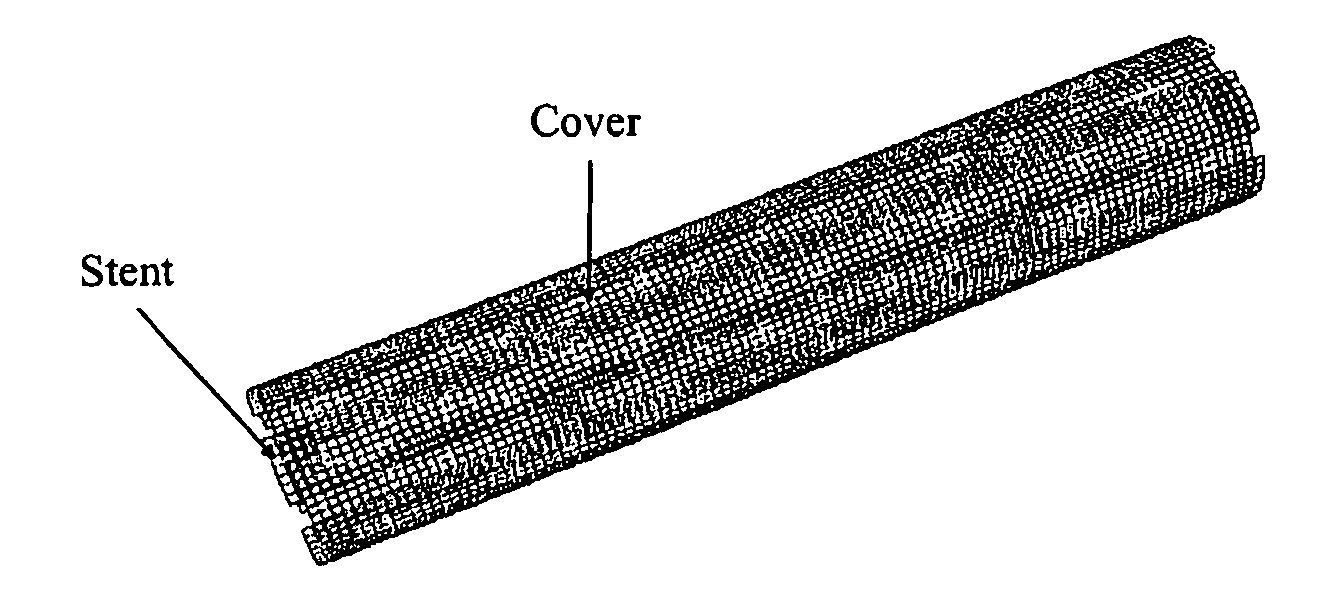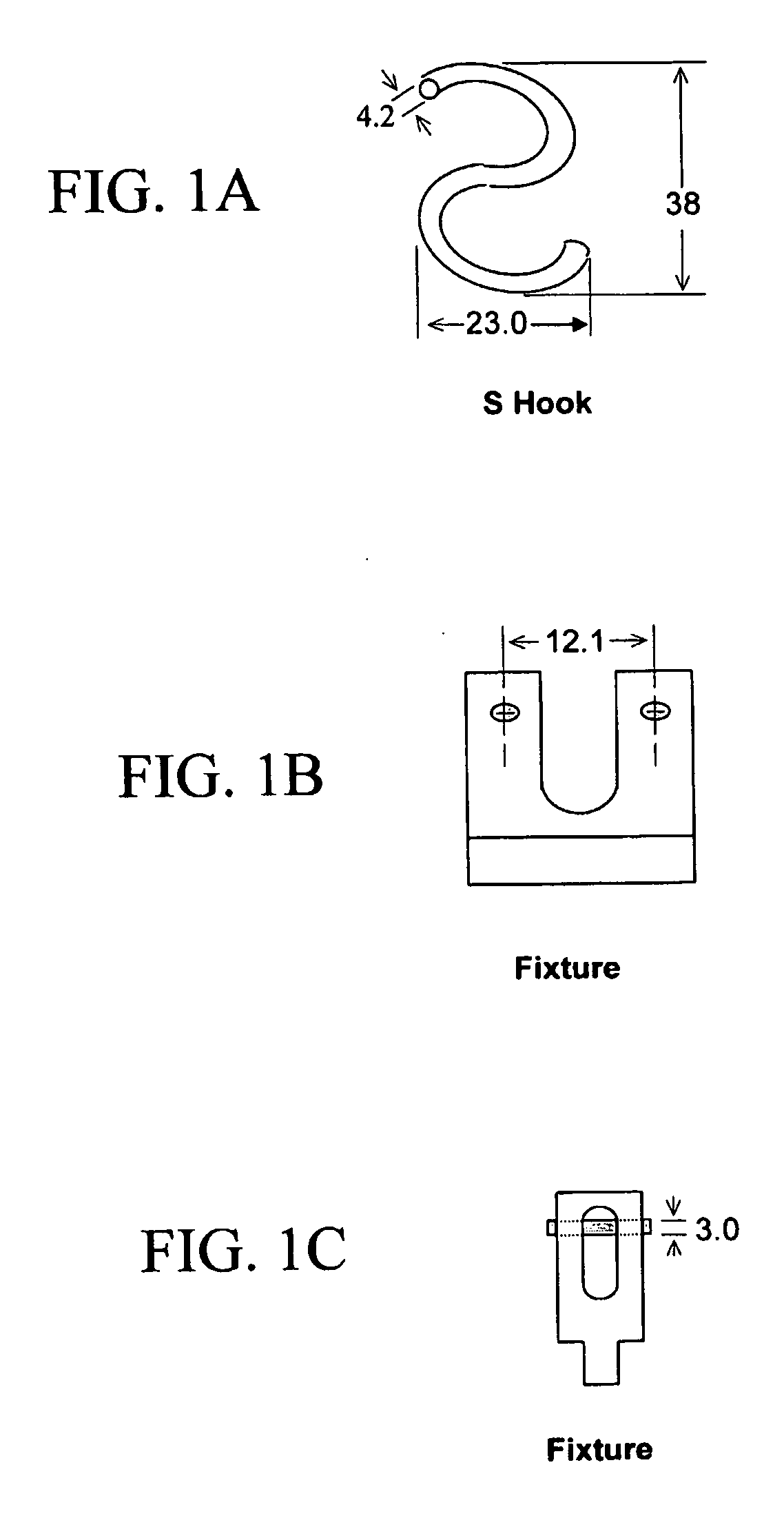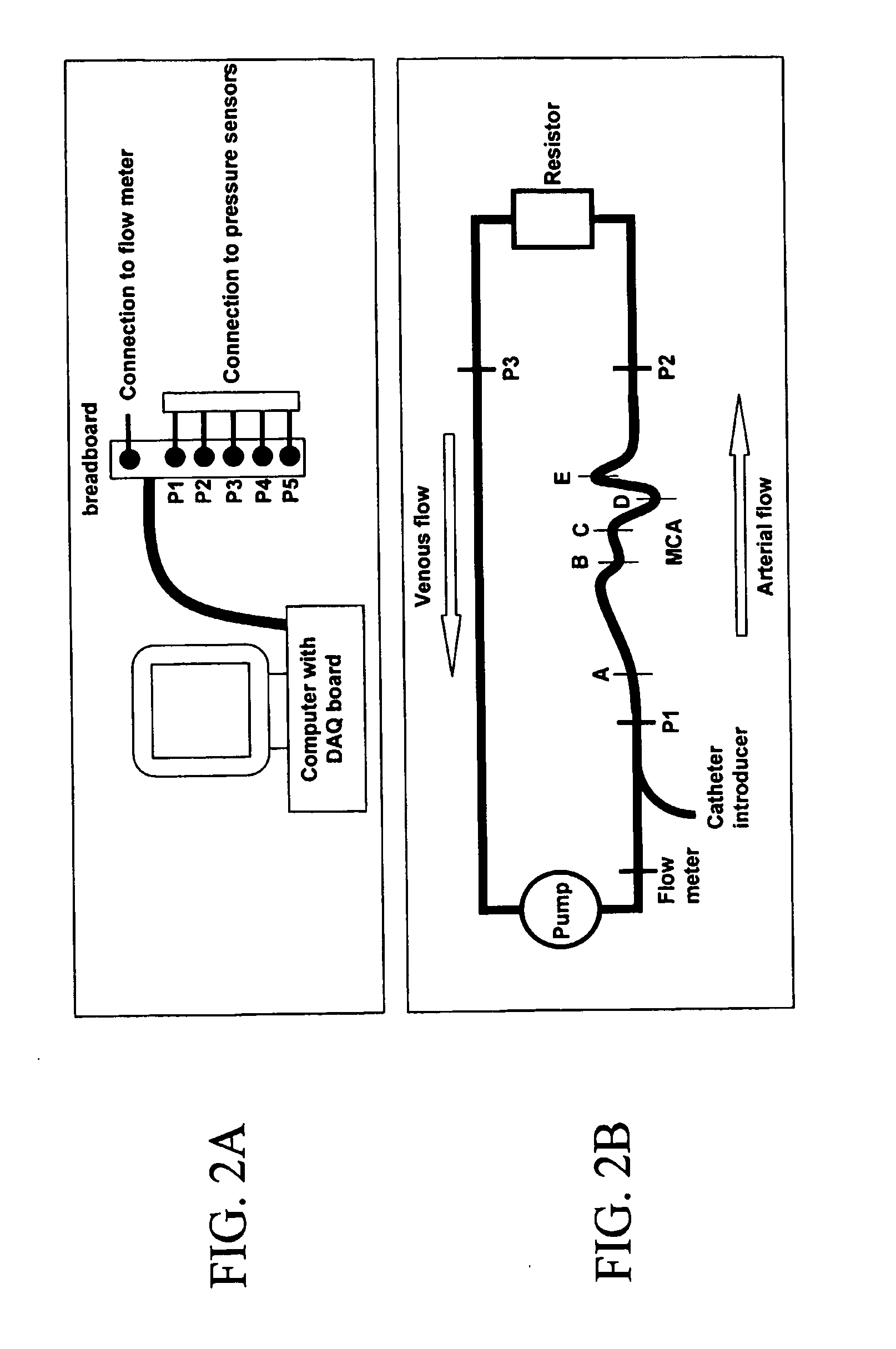Tubular Polymer Stent Coverings
- Summary
- Abstract
- Description
- Claims
- Application Information
AI Technical Summary
Benefits of technology
Problems solved by technology
Method used
Image
Examples
example 1
Evaluation of Materials for Stent Coverings
[0058]Tear-resistant, biocompatible elastomeric polymer materials will be chosen for making tubes. Two types of commercially available solution grade (SG) thermoplastic materials will be selected: a polyurethane (TECOFLEX SG-80A, THERMEDICS Polymer Products, Woburn, Mass.) and a few silicone-polyurethane copolymers (CARBOSIL 40 90A, PURSILI 20 80A and PURSIL AL5 75A, The POLYMER TECHNOLOGY GROUP Inc., Berkeley, Calif.). TECOFLEX SG-80A is an aliphatic polyether based thermoplastic polyurethane (TPU). PURSIL silicone-polyether-urethane and CARBOSIL silicone-polycarbonate-urethane are thermoplastic copolymers containing silicone in the soft segment. PURSIL 20 80A is an aromatic silicone polyetherurethane whereas PURSIL AL5 75A is an aliphatic silicone polyetherurethane. Table 1 lists some of the physical test data of these materials reported by the manufacturers. From the table it is clear that these materials cover a range of mechanical prop...
example 2
In Vitro Performance Testing of Covered Stent
[0061]Tests will be performed to evaluate the robustness of the device fabrication and to determine the device performance in vitro under various conditions.
[0062]A. Mechanical Testing of the Covered Stent by INSTRON
[0063]Flexibility and maneuverability testing is useful to predict the feasibility of navigating the device through the tortuous intracranial vasculature system in the brain before the final deployment. A three-point bend test on the double lumen tubular micrograft with uncured adhesive will be performed. FIGS. 1A-1C show an “S” hook (FIG. 1A) and three-point bend fixture (FIGS. 1B and 1C). The bend test fixture and an “S” hook for the bend test will be made in the machine shop.
[0064]Mechanical testing on the deployed covered stent will be performed using an INSTRON model 4301 (INSTRON Corporation, Canton, Mass.). Compression and three-point bend tests will be performed. The compression test will evaluate how much radial press...
example 3
In Vivo Testing of Covered Stent in Rabbit Arteriovenous Fistula (AVF) Model
[0074]Under protocols approved by University of Florida's Institutional Animal Care and Use Committee, covered stents of the invention were tested for efficacy and histological compatibility in New Zealand White (NZW) rabbits.
[0075]Histological analysis of the effect of device placement was conducted in the normal common carotid artery. A vascular sheath was placed in the femoral artery of a NZW rabbit. Using endovascular techniques, a microstent covered with tubular polymer was navigated through the vasculature towards the common carotid artery. The device was deployed within the vessel and angiography was performed to confirm patency. Following device placement, the animal was monitored for a period of two to six weeks, depending on the experimental group to which it was assigned. At the end of the determined monitoring period, angiography of the stented vessel was performed to reveal angiographic patency....
PUM
 Login to View More
Login to View More Abstract
Description
Claims
Application Information
 Login to View More
Login to View More - R&D
- Intellectual Property
- Life Sciences
- Materials
- Tech Scout
- Unparalleled Data Quality
- Higher Quality Content
- 60% Fewer Hallucinations
Browse by: Latest US Patents, China's latest patents, Technical Efficacy Thesaurus, Application Domain, Technology Topic, Popular Technical Reports.
© 2025 PatSnap. All rights reserved.Legal|Privacy policy|Modern Slavery Act Transparency Statement|Sitemap|About US| Contact US: help@patsnap.com



